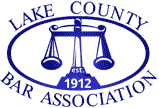Personalized Legal Services in Barrington & Schaumburg, IL
We speak English, Ukrainian and Russian languages
| Personal Injury |
Business Law |
Real Estate Law |
Wills, Trusts & Probate |
General Civil Litigation |
Elder Law |
Charitable Remainder Trusts
As the name implies, a charitable remainder trust involves the transfer of assets to a trust, with the income going to an individual or individuals (which can include the owner of the assets) and with a charity receiving the assets at the expiration of the trust period. Such a trust device benefits the individuals who are the objects of the property owner's generosity, it transfers assets to the property owner's preferred charities, and it yields tax savings for the property owner.
If the trust is created during the property owner's lifetime, there is a charitable tax deduction equal to the present value of the charity's remainder interest, and the transferred property will escape federal estate tax. If the trust is established under a will, the charitable tax deduction will remove the property from the taxable estate.
There can be other, not-so-obvious benefits. Where appreciated assets are transferred, especially where the assets have a low cost basis and there is a likelihood that the property owner would have sold the assets at some point had he not transferred them to the trust, the property owner avoids a capital gains tax that would be imposed upon an outright sale. If the trust sells the assets, it will have no capital gains tax liability because the trust is a tax-exempt entity.
If the property owner has established the trust in his lifetime, the fact that the trust can sell the property tax-free maximizes the income base for the income beneficiary, which can be the property owner himself. Moreover, if the trust is a charitable remainder unitrust (CRUT), under which the income is measured as a percentage (no less than 5% of the value of the trust property in a given year), the trust serves as a hedge against inflation for the income beneficiary because, as the trust property appreciates in value, the income paid out increases. This is not true under the other type of charitable remainder trust, the charitable remainder annuity trust (CRAT), under which a fixed amount of income is paid out each year.
A CRUT can be used as a retirement plan. Although a CRUT usually pays a percentage of the trust's annual value, it can provide that income distributions may not exceed the amount of income actually earned by the CRUT in a given year. Any shortfall in income can then be made up when there is sufficient income. During the property owner's preretirement years, the CRUT can be invested in growth stocks, thus producing little or no income. Upon retirement, those assets can be sold, with the proceeds invested in income-producing assets that will yield the agreed-upon income percentage, plus a "make-up" portion to compensate for the earlier shortfalls. Thus, income distributions from a CRUT can be minimized during the preretirement years and then can be maximized for the retirement years.
It is important to remember that a charitable remainder trust must meet a series of technical requirements and therefore should be drafted only by an experienced professional.
This website is not intended to constitute legal advice or the provision of legal services. By posting and/or maintaining the website and its contents, Lucas Law does not intend to solicit business from clients located in states or jurisdictions outside of Illinois wherein Lucas Law or its individual attorney(s) are not licensed or authorized to practice law.














